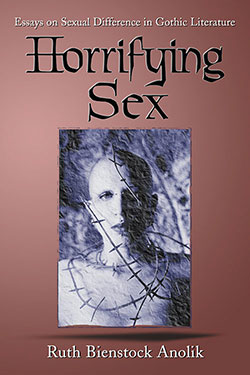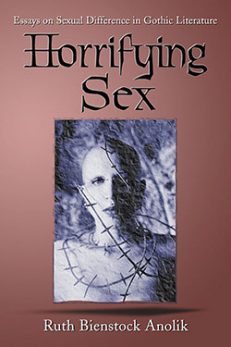Horrifying Sex
Essays on Sexual Difference in Gothic Literature
$39.95
In stock
About the Book
The Gothic moment in literary history arose in the age of the Enlightenment, and the Gothic fascination with the unknown reflects the Enlightenment’s response to the limits of reason. Traditionally, the emblem of the unknown that lurks in the Gothic is the supernatural, the monstrous, and the inhuman. Often overlooked is the observation that Gothic texts are also haunted by figures that represent the mystery of sexuality.
This collection of essays sharpens that observation and asserts that Gothic anxieties about sexuality are likewise rooted in fear of the unknown, represented by sexual practices and desires that either lie hidden or deviate from cultural norms. The first three sections refer to popular as well as marginalized Gothic texts to portray the three prototypes of sexual “deviance”: the female sexual Other in “The Fatal Woman”; the male sexual Other in “The Satanic Male”; and the homosexual Other in “Homosexual Horror.” The fourth section covers literary works that celebrate sexual difference and question the idea that the sexually “deviant” is socially Other.
About the Author(s)
Bibliographic Details
Edited by Ruth Bienstock Anolik
Format: softcover (6 x 9)
Pages: 276
Bibliographic Info: notes, bibliographies, index
Copyright Date: 2007
pISBN: 978-0-7864-3014-7
eISBN: 978-1-4766-0651-4
Imprint: McFarland
Table of Contents
Table of Contents
Acknowledgments vi
Introduction. Sexual Horror: Fears of the Sexual Other 1
PART I. THE FATAL WOMAN
1. Life-in-Death: The Monstrous Female and the Gothic Labyrinth in Aliens and “Ligeia” 27
2. Morbid Mothers: Gothic Heredity in Florence Marryat’s The Blood of the Vampire 40
3. The Unbearable Hybridity of Female Sexuality: Racial Ambiguity and the Gothic in Rider Haggard’s She 55
4. Frankenstein’s Other: The Monstrous Feminine in Maryse Condé’s Célanire cou-coupé 67
PART II. THE SATANIC MALE
5. “There Was a Man”: Dangerous Husbands and Fathers in The Winter’s Tale, A Sicilian Romance and Linden Hills 83
6. Sexual or Supernatural: Threats in Radcliffe’s The Italian 102
7. Investigating the Third Story: “Bluebeard” and “Cinderella” in Jane Eyre 111
8. Monstrous Men: Violence and Masculinity in Robert Browning’s The Ring and the Book 122
9. “I Am God”: The Domineering Patriarch in Shirley Jackson’s Gothic Fiction 135
PART III. HOMOSEXUAL HORROR
10. Other Love: Le Fanu’s Carmilla as Lesbian Gothic 151
11. Preying on the Pervert: The Uses of Homosexual Panic in Bram Stoker’s Dracula 167
12. Horror and Homosexuality in Christopher Isherwood’s Mr. Norris Changes Trains 177
13. Invasion of the Husband Snatchers: Masculine Crisis and the Lavender Menace in I Married a Monster from Outer Space 188
PART IV. VIVE LA DIFFÉRENCE: CELEBRATING THE SEXUAL OTHER
14. The Lesbian Vampire: Transgressive Sexuality 203
15. Another “Gendered Other”? The Female Monster-Hero 233
16. Imagineer: Clive Barker’s Queering of the Conservative Bent of Horror Literature 248
Contributors 259
Index 263
Book Reviews & Awards
“a compelling and highly readable analysis…provocative in the best sense of the word”—John-Paul Checkett, Scarlet; “quite readable”—Critical Mass.





